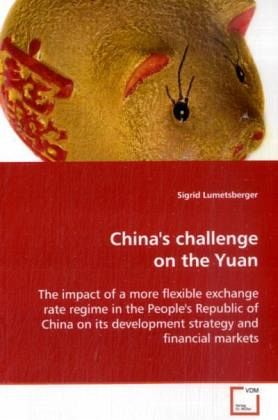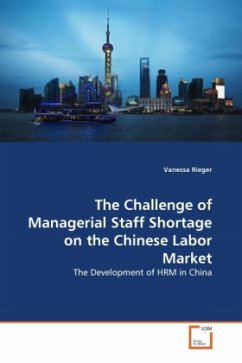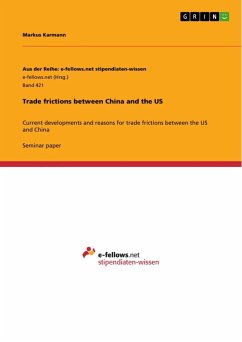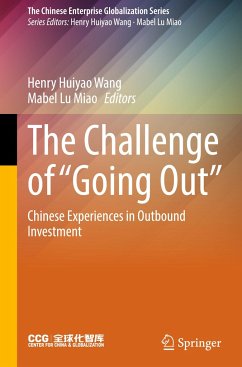
China's challenge on the Yuan
The impact of a more flexible exchange rate regime in the People's Republic of China on its development strategy and financial markets
Versandkostenfrei!
Versandfertig in 6-10 Tagen
39,99 €
inkl. MwSt.

PAYBACK Punkte
20 °P sammeln!
The introduction of the renminbi to the People sRepublic of China in 1949 led to much domestic marketdistortion. It was only in the beginnings of the1980s when finally the economy witnessed aspectacular progress. This advancement introduced theever-growing presence of China s products to theinternational marketplace and the development of theChinese domestic market. Since these first steps tothe international scene criticism has not been keptshort on its monetary policy. The common argumentwas, and still is, that by keeping the renminbiundervalued and ensuring the competitiveness ofChinese exp...
The introduction of the renminbi to the People s
Republic of China in 1949 led to much domestic market
distortion. It was only in the beginnings of the
1980s when finally the economy witnessed a
spectacular progress. This advancement introduced the
ever-growing presence of China s products to the
international marketplace and the development of the
Chinese domestic market. Since these first steps to
the international scene criticism has not been kept
short on its monetary policy. The common argument
was, and still is, that by keeping the renminbi
undervalued and ensuring the competitiveness of
Chinese exports, the main trading partners suffer
from negative implications on their Balance of
Payments. By July 2005, the Chinese authorities made
the first significant move towards a more flexible
exchange rate regime with the introduction of a
basket peg. Nevertheless, this move has not
substantially changed the public opinion. Taking the
Chinese domestic market and its international
importance into account, the author evaluates the far
reaching influences of a potential change in the
Chinese exchange rate regime.
Republic of China in 1949 led to much domestic market
distortion. It was only in the beginnings of the
1980s when finally the economy witnessed a
spectacular progress. This advancement introduced the
ever-growing presence of China s products to the
international marketplace and the development of the
Chinese domestic market. Since these first steps to
the international scene criticism has not been kept
short on its monetary policy. The common argument
was, and still is, that by keeping the renminbi
undervalued and ensuring the competitiveness of
Chinese exports, the main trading partners suffer
from negative implications on their Balance of
Payments. By July 2005, the Chinese authorities made
the first significant move towards a more flexible
exchange rate regime with the introduction of a
basket peg. Nevertheless, this move has not
substantially changed the public opinion. Taking the
Chinese domestic market and its international
importance into account, the author evaluates the far
reaching influences of a potential change in the
Chinese exchange rate regime.






![International Business: The Challenge of Global Competition W/ Student CD, Map, Powerweb, and Cesim Simulation [With CDROM] Cover International Business: The Challenge of Global Competition W/ Student CD, Map, Powerweb, and Cesim Simulation [With CDROM]](https://bilder.buecher.de/produkte/24/24495/24495247n.jpg)





